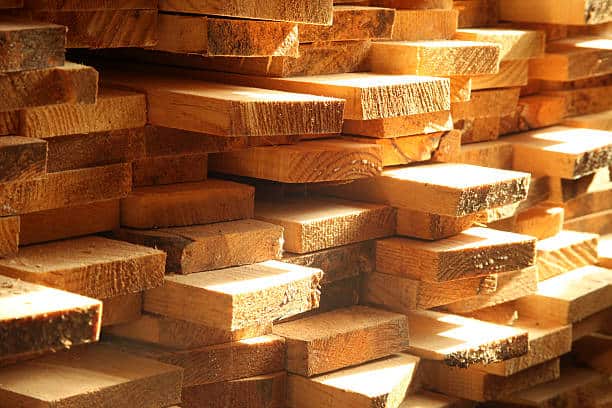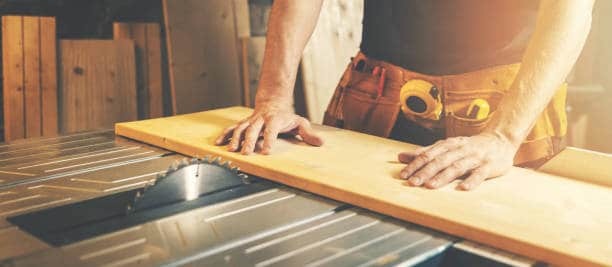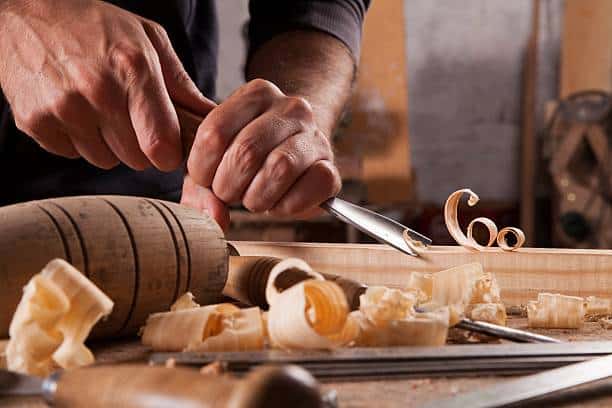
Introduction: Every Wood Has Its Tool
Ah, pine lumber – the quintessential wood that smells like a crisp winter morning and is as versatile as an old Leatherman’s multi-tool. If you’re like me, you’ve had your fair share of experiences with this softwood.
I made rustic-looking furniture for years, back in the 80s when it first appeared. You may remember making something fun, like a napkin holder or spice rack, as a gift for a friend or family member.
It has been said that it doesn’t take too many tools for cutting and shaping pine lumber. In fact, essential tools such as cross-cut and rip hand saws, a coping saw, a hand plane, sanding blocks, chisels, clamps, and something to drill screw holes will work great.
Whether you’re a seasoned woodworker or just getting started, you can build a lot with just a few tools for cutting pine lumber.
Today, we’ll dive into the world of pine lumber and talk about the right tools for cutting pine lumber. Let’s face it: there are a lot of tools on the market, and having the right tools is half the battle.
Understanding Pine Lumber: It’s Soft, But It’s Tricky
The Quirks of Pine
Before we get into the nitty-gritty of tools, let’s talk about our good ol’ pine. Pine is soft, cuts like butter when you have the right blade and can leave you with a smooth finish that feels like glass. But, and it’s a big but, it’s got its quirks. The knots can be as stubborn as a mule, and if you’re not careful, you might end up with more chips than a poker night at a friend’s.
Depending on the end product, you should be mindful of the pines’ tendency to warp and bow. A warped or bowed pine lumber could require removing more material than planned, affecting the final results you seek.
Essential Cutting Tools: The Right Blade for the Right Job
Hand or power tools, it’s your preference; they both have their place in woodworking. I personally use a mix of both in my shop.
KEEP IN MIND: Hand tools whisper, power tools roar, but at the end of the day, it’s your craftsmanship they’ll adore!
Hand Saws: Old School But Cool
I know we live in the age of power tools. But there’s something about using a hand saw that makes you feel like a true craftsman. Not to mention, it’s a great arm workout and can help us to keep fit, at least in one arm.
When it comes to pine, a sharp crosscut saw can do wonders for making those quick cuts without splintering the wood. I still remember using a handsaw when I first got started, and not too far into it; I couldn’t wait to get a power saw.
Power Saws: When You Need a Little Vroom
If you’re more about getting things done quickly and have a lot of lumber to get through, a power saw will become your best friend. A circular saw can make accurate straight cuts like a hot knife through butter and miter saws… Well, they’re the kings of angled cuts. I won’t forget the day I switched to a power miter saw – it was like seeing color for the first time.
Pro Tip: Use a carbide-tipped saw blade for clean cuts in pine lumber; its hardness helps prevent dulling from pine resin. It’s also less likely to burn the edges when ripping and ends with cross-cutting.
If you’re looking for a good combination carbide-tipped blade, I highly recommend the Diablo 10″ 50-tooth ATB Combo Saw Blade here on Amazon. I’ve used many different brands of saw blades. Some cost four times what this Diablo blade costs and I found that they didn’t last any longer or cut any better. In fact, I’m currently using one in two of my table saws and another in a miter saw.

Shaping Pine Lumber: The Art of Fine-Tuning
A meticulous process of refining pine wood. It involves precise cutting, carving, and smoothing to transform rough lumber into a polished final product, highlighting the skill and attention to detail that woodworking demands. Here are a few tools that are best for cutting pine lumber.
Chisels: Not Just for Shaving
Chisels might seem old-fashioned, but they’re essential for those fine adjustments. There’s a certain satisfaction in paring down wood shavings to get that perfect fit. And the best part? The shavings make great kindling for the indoor fireplace or outdoor fire pit.
Another fun aspect of pine due to its softness is the ability to carve with it. By using gouges and v-tools, pine can become a hand-carved spectacle deserving everyone’s attention. Or even more grandiose is using a single-bladed knife to carve out figurines and other 3-D-shaped projects.
PRO TIP: Like any wood-cutting tool, keep chisels, gouges, and knives razor-sharp when working with pine to avoid crushing or tearing the soft fibers.

Planers and Routers: Smooth and Stylish
A planer will give you that flat, smooth surface that makes pine look premium. And for the edges and patterns, nothing beats a good router. Just take it slow – pine’s soft nature means it’s easy to take off more than you planned. Trust me, I’ve learned that the hard way many times over.
Sanding Tools: From Rough to Refined
Sanders and paper are another important tool to keep things smooth and looking finished.
Sandpaper Grit Selection: It’s All in the Grit
Choosing the right sandpaper is like picking the right wine for dinner – it can make or break the experience. Start with a coarser grit to get rid of the rough stuff, then work your way to a fine grit for that smooth finish.
Orbital Sanders: Round and Round We Go
I’ve spent countless hours sanding by hand until I discovered orbital sanders. Let me tell you, it changed my life. It’s like the difference between washing clothes by hand and using a washing machine. If you never have, give it a try, and you’ll see what I mean.

Other Wood Tools: So Many to Choose From
There are too many tools to mention in this article that could benefit someone who loves working with pine. However, there are a few honorable mentions that need to be brought to your attention to help with your woodworking endeavors.
- Jigsaw: Ideal for cutting curves and shapes, and it’s relatively safe for beginners to handle with the proper guidance.
- Cordless Drill: While not a cutting tool, it’s indispensable for drilling holes and driving screws in your pine lumber projects.
- Miter Box and Saw: For making precise angled cuts, a miter box with a hand saw can be more approachable than a power miter saw.
- Rasp and File Set: These are for refining shapes and smoothing out rough cuts by hand.
- Speed Square: Not a cutting or shaping tool, but essential for marking straight and angled cuts accurately.
- Clamps: A variety of clamps, like bar clamps and C-clamps, are crucial for holding your work securely while you cut or shape pine lumber.
You can never have too many clamps with working on any project. One of my favorite sets of clamps has been the Irwin Quick Grip clamp set on Amazon. In my opinion, it’s the best bargain out there, and I’ve been using them in my shop all the time for many years.
My Final Thought: Tools, Tales, and Pine Lumber
Choosing the right tools for cutting and shaping pine lumber can mean the difference between a project that’s just okay and one that’s extraordinary. It’s about understanding the wood, respecting the process, and enjoying every step of the journey. So, go ahead, pick your tools wisely, and remember – every piece of pine has a story, just like every woodworker. Let’s make sure it’s a good one.
Did You Like This Article?
If so, then please look at this article, “What is Pine Wood Good For?” which dives into some intriguing uses for pine lumber/wood.
